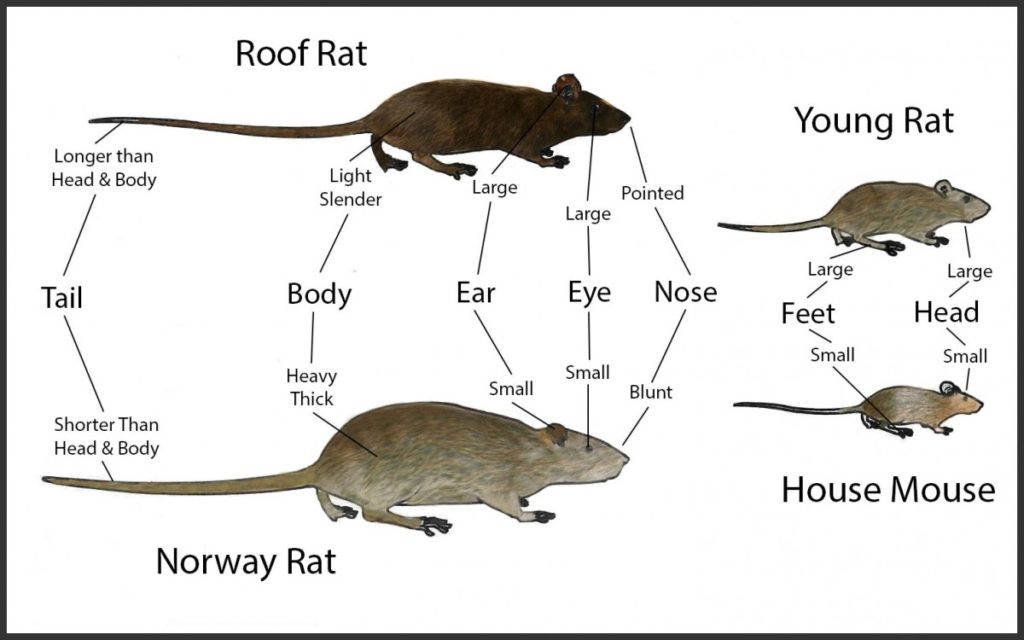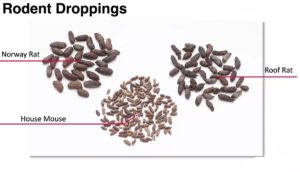Mouse Poop vs Rat Poop: How to Identify and Clean up droppings


Mice always leave evidence of their presence either by causing destruction or pooping in your house. This area is where they are most active in your home. Most people have no idea what mouse poop looks like, and they may sweep it off, thinking it is normal dirt. It is important to know how the poop looks like since some may carry dangerous infectious diseases.
Finding poop without knowing which animal it belongs to is horrible. Still, rat poop is normally troublesome since you will notice that these small rodents will use the same spot for pooping. So, once you realize that you have a rodent issue, you will have a pile of poop. This can involve cleaning up and repairing the areas, even after you’ve already handled the rodent problem itself.
It is very critical to take a couple of measures to handle the poop effectively. Besides, you also need to be cautious to prevent getting any diseases from dealing with the droppings. Still, do you know what rat poop looks like? How can you get rid of it completely? I have created this article to help you with this unpleasant issue.
How to Identify Rodent Droppings?
It’s not hard to identify rodent droppings when your property suffers from an infestation – you may notice tiny dark pellets of poop scattered everywhere. But, how do you know if these droppings belong to a rat and not a mouse? There’s a simple way to identify them: Rat Poop is found in large groupings. They are about the size and shape of an olive and can often be found near insulations. Mouse Poop, on the other hand, is much smaller than an olive. They are elongated and with a sharp end.

How to Clean up Rat & Mouse Poop Safely
Open the doors and windows – Ventilate the room for at least 30 minutes before you begin cleaning.
Wear protective gear – Use rubber gloves, so you don’t touch the waste directly; a face mask, so you don’t inhale the dust (as we said, diseases can be transmitted by inhaling polluted dust); even consider wearing protective goggles, so contaminated dust doesn’t get into your eyes.
Spray with a 10% chlorine bleach solution – Mix 360 millilitres of chlorine bleach with 5 litres of hot water and spray the droppings with the solution. Don’t sweep or vacuum, as this will release pathogens into the air and/or trap the pathogens on your broom or in your vacuum cleaner.
Pick up the droppings with a paper towel – Then, place them in a plastic bag and seal it. Also, put the paper towel in a plastic bag and seal it. Dispose of the plastic bags outside of your home.
Wipe all floors and surfaces with disinfectant – Use the same solution of 10% chlorine bleach. Use a paper towel to dry.
Wash your hands – Use hot water and a disinfectant to clean your hands. Don’t forget to scrub under your nails and around your wrists.
Look carefully for evidence of rat or mice poop, urine and nesting materials and be sure to follow the steps to dispose of it and disinfect the area properly. Most importantly, NEVER sweep or vacuum it up because of the risk of transmitting disease in the process.
If you’re finding droppings and you need help with identification, let our Burnaby pest control technicians, Richmond pest control technicians, Coquitlam pest control technicians, West Vancouver pest control technicians and North Vancouver pest control technicians assist you. We’ll help you track down those rodents and keep them out of your home permanently.
More resources:
